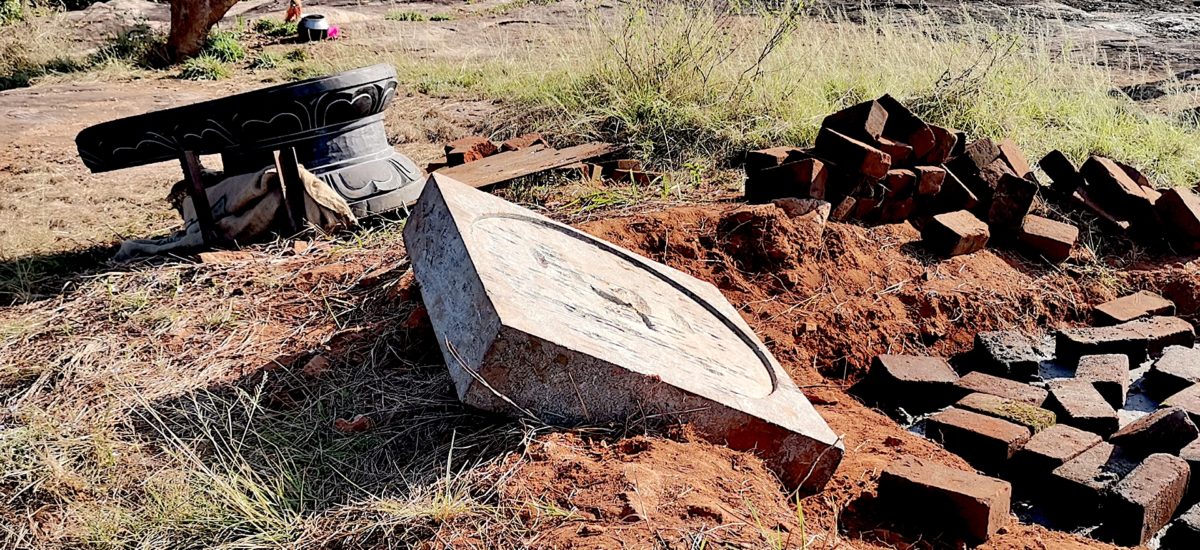Photo courtesy of Tamil Guardian
High atop Vedukkunaari Hill in the Vavuniya district, an ancient temple stands at the precipice of a religious and legal storm. Revered by the local Tamil community as the Vedukkunaari Aathi Lingeswarar Temple for over 3,000 years, it now finds itself embroiled in a complex dispute with the Department of Archaeology, which claims the site as a Buddhist archaeological treasure named Vaddamana Pabbathaya Vihara. This clash of narratives and claims has ignited a firestorm of accusations, legal battles and anxieties about cultural suppression, making Vedukkunaari Hill a crucible of faith and friction in contemporary Sri Lanka.
Tamil legend paints a picture of the hill as a sacred space since time immemorial, its name deriving from the “Vedukunari” or “bastard ebony” trees that once flourished on its slopes. These narratives are bolstered by archaeological evidence including ancient Tamil inscriptions etched into the rock face and remnants of Hindu rituals discovered amongst the ruins. These findings seem to confirm the temple’s longstanding significance as a Hindu pilgrimage site.
At the heart of the controversy lies the history of the site. Local belief holds that the temple has served as a sacred space for millennia, its existence predating any documented Buddhist activity. The presence of ancient Tamil Hindu inscriptions and remnants of Hindu rituals bolster this narrative. However, the Department of Archaeology argues that excavations have revealed Buddhist monastic ruins, pointing to a potentially earlier Buddhist presence. This interpretation fuels concerns among the Tamil community who see it as an attempt to erase their heritage and undermine their religious claims.
Adding fuel to the fire is the recent incident of vandalism in March 2023. The temple’s statues, including the revered Aathilingam, were desecrated and discarded. While the temple administration points fingers at the department, accusing them of orchestrating the destruction, the department adamantly denies any involvement. This accusation, coupled with past instances of legal and administrative hurdles placed by the department on the temple’s activities, feeds a narrative of persecution among the Tamil community.
Beyond legal pronouncements, state actors such as the police and army have exhibited actions perceived as favouring Buddhist claims. For instance while the court ruling permitted worship, police allegedly restricted access to the site during festivals, hindering religious practice. Additionally, a recent visit by a group of monks sparked controversy, seen by many as an attempt to assert Buddhist dominance over the site. These actions, coupled with the department’s interpretation of history and alleged involvement in the vandalism, deepen the community’s anxieties about marginalisation and religious suppression.
The dispute has transcended legal battles and ignited wider concerns about religious discrimination and cultural suppression. Protests and condemnations from Hindu organisations and political leaders highlight the simmering tensions. They see the actions of the Department of Archaeology as part of a larger pattern of marginalising the Tamil minority and their cultural heritage. This perception, fuelled by historical grievances and ongoing political divisions, adds another layer of complexity to the already combustible situation.
Vedukkunaari Hill stands as a microcosm of the complex historical and religious tapestry of Sri Lanka. The dispute raises crucial questions about competing narratives, archaeological interpretations and the protection of minority rights. As the legal battles continue and negotiations remain elusive, the future of the temple hangs in the balance. Will it remain a sacred space for the Tamil community or will the Department of Archaeology’s claims prevail?

